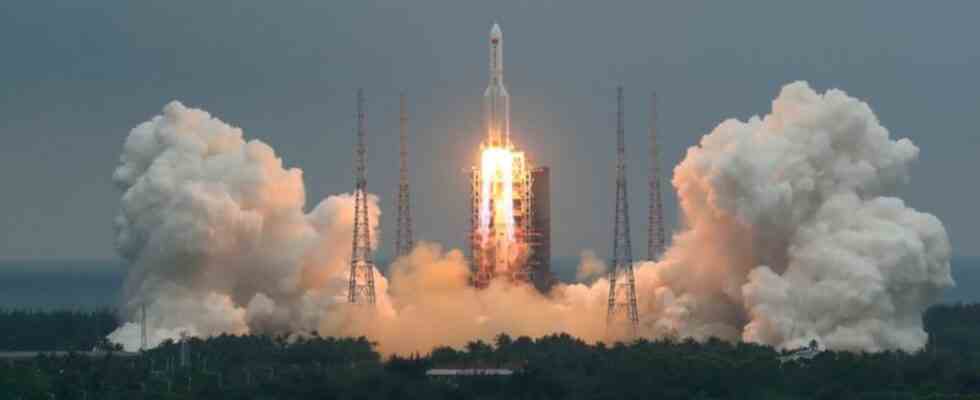space travel
Remains of Chinese missile plunged into sea near Philippines
In this file photo released by China’s Xinhua News Agency, a Long March-5B rocket carrying a module for a Chinese space station lifts off from the Wenchang Spacecraft Launch Site in Wenchang, south China’s Hainan province. photo
© Ju Zhenhua/Xinhua via AP/dpa
Debris from the Chinese missile falls into the Sulu Sea near the Philippines. No problem, says China’s space agency. NASA and other experts see things differently.
The “uncontrolled” re-entry of a large Chinese space rocket into Earth’s atmosphere has sparked international criticism. According to official information from Beijing, the remains fell into the sea near the Philippines. The “most part” of the last stage of the “Long March 5B-Y3” rocket had burned up, the Chinese space program reported, according to the official Xinhua news agency. The remaining debris fell east of the Philippine island of Palawan into the Sulu Sea.
Last Sunday, the rocket launched the “Wentian” space module with a laboratory for the Chinese space station “Tiangong” (Heaven’s Palace), which is currently under construction. The re-entry took place on Sunday at 00:55 Chinese time (18:55 CEST). Even if experts considered the probability that people or populated areas would be hit to be low, there was criticism from NASA and experts of the Chinese approach.
Nasa criticizes the lack of information exchange
“The People’s Republic of China has not shared any specific trajectory information,” said NASA chief Bill Nelson. This type of information exchange is “crucial for the responsible use of space and the security of people here on earth”. China had previously received criticism from NASA for the fact that the rocket did not break up into smaller parts when it entered the atmosphere, as is the international standard.
“No other country leaves these 20-ton things in orbit to re-enter Earth’s atmosphere in an uncontrolled manner,” astrophysicist Jonathan McDowell of the Harvard-Smithsonian Center for Astrophysics told CNN. “What we really want to know is if any parts end up on the ground.” It might take a little longer for that to become known. Residents of Sarawak in Malaysia observed a spectacle of lights in the night sky, which they first thought was a meteor.
When China launched the main module of the space station in April 2021, the remains of the rocket used for this purpose fell into the Indian Ocean near the Maldives archipelago, which also triggered criticism. Here, too, the Chinese space program had asserted that the “largest part” of the rocket burned up when it re-entered the earth’s atmosphere and was thus destroyed.
Tweet US Space Command Nasa press release tweet with video

